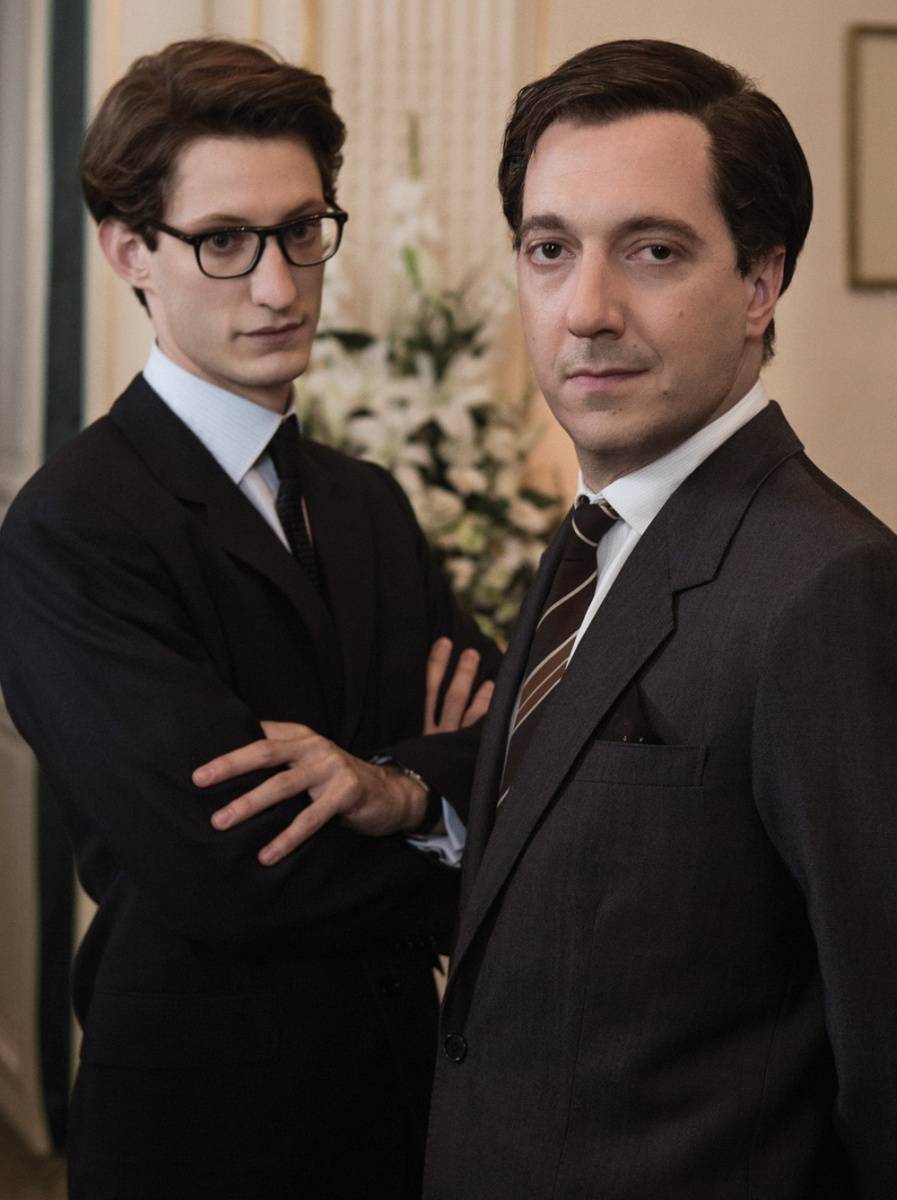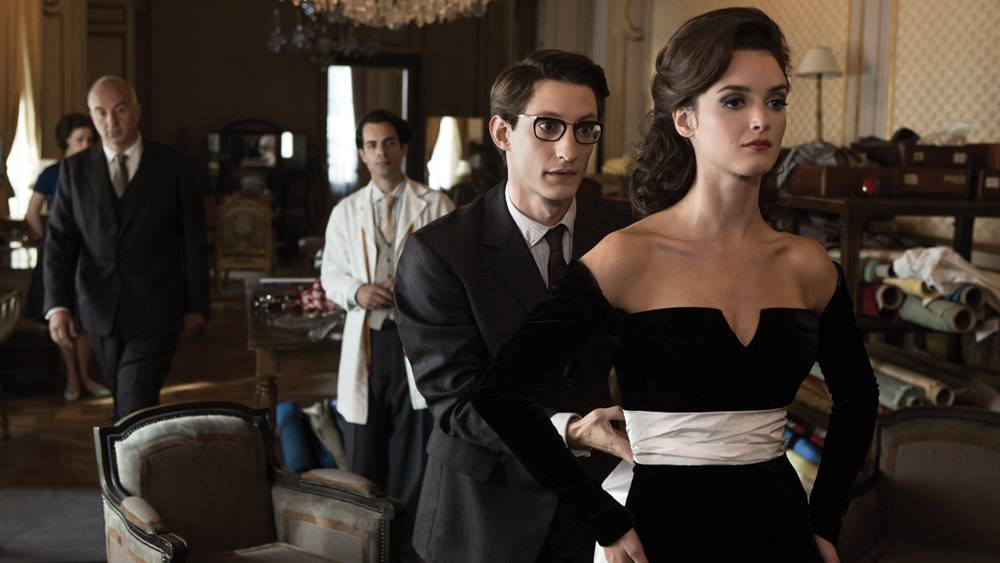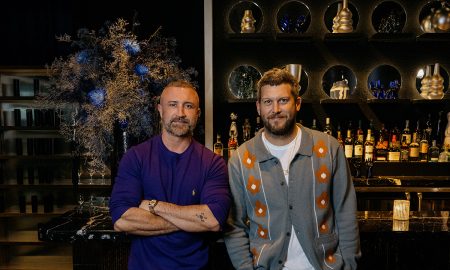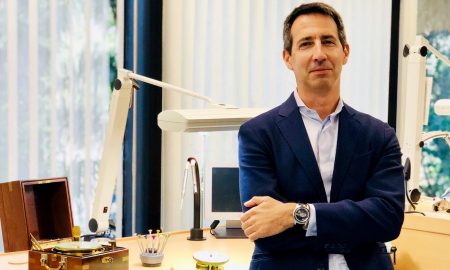
There is one specific moment that stood out to Pierre Bergé after he watched Yves Saint Laurent, the new Weinstein Company biopic about the birth of the House of Saint Laurent, for the first time. It is more than just a defining moment of the film to Bergé: it is the most significant moment of his life. In the scene, shot dreamily by director Jalil Lespert, it is 1960, and then 23-year-old Saint Laurent, played by look-alike Pierre Niney, is just starting to heal after suffering a nervous breakdown after spending 20 days in the army during the Algerian War. He has also just been fired from his position as head designer of the House of Christian Dior, a position he had been personally selected for by Dior himself three years earlier. On screen, Bergé, depicted by Guillaume Gallienne, is visiting Saint Laurent, his lover, in the Val-de-Grâce military hospital. The two are about to make a commitment that will change both of their lives forever: it is the moment they decide to create the House of Yves Saint Laurent. “The most important moment of the film for me is when I went to the hospital, and Yves says, ‘Pierre, we have to open a new couture house together.’ That’s the most important moment of the film, and the most important moment in our lives,” Bergé, now 83, declares.

The film, though beautiful, is unflinching in its portrayal of Saint Laurent, who, at the onset, is painfully shy and tends to be more comfortable around clothing than around people. He blossoms after meeting Bergé at a dinner party organized by Marie-Louise Bousquet, the then-Paris editor of Harper’s Bazaar, and continues to discover himself after creating his fashion brand with funds procured from Atlanta millionaire J. Mack Robinson. While he loses himself in his designs, creating a new class of ready-to-wear and iconic items like the tuxedo suit for women, Saint Laurent also indulges in a lot of debauchery, drugs, carousing and cheating, which is shot so immaculately by cinematographer Thomas Hardmeier that this misbehaving almost becomes a thing of beauty.
Bergé, who acted as the CEO of Yves Saint Laurent Haute Couture until it shuttered in 2002, is Saint Laurent’s quiet, yet forceful voice of reason in the film. He is disapproving of his partner’s lifestyle, yet his love for Yves, through the voice and visage of Gallienne, is evident. Bergé and Saint Laurent eventually called their relationship quits in 1976, but parted amicably, and remained close friends until the designer’s death of brain cancer in 2008. For Bergé, seeing Niney as the deceased designer onscreen was a shock, but in the best way possible: for a brief time, Saint Laurent existed again. “It was wonderful, fantastic when I saw [Pierre Niney] for the first time. It was priceless, absolutely priceless, because he was Yves, his face, his voice, his mannerisms – everything,” he says. The French industrialist and patron has a laissez-faire attitude about audience reaction to the film, and to the actuality of Saint Laurent the man being made so public. “What can I say? It is the truth,” he states. “It is a biography, not exactly the reality. There’s always something that is a little different. The screen is not exactly your life. It’s a little bit life, a little bit imagination, but it is art, and the director is an artist. That means he has the right to do what he wants, even with my life.”

As bizarre as it was to see a representation of himself and to see his history played out on the silver screen, the couture house co-founder enjoyed the production. “It is very strange to see your own life on the screen, but I liked it very much,” he admits. “In a way, it was an homage, and I liked that. I am very, very happy that there was a movie about Yves’ life. The only important thing is that someone did the movie, and [Lespert] did it.”
But while watching Niney onscreen was a treat, seeing someone play himself, and seeing himself through another’s eyes, was harder. “It was difficult for me,” he admits. “[Guillaume Gallienne] is a great actor; he’s very famous in France. It’s difficult for me to say if he was a good Pierre Bergé or not.”
“Good” is a descriptor Bergé should apply to himself. In his lifetime, he has done incredible things: he is responsible for the launch of the French magazine, Globe, and owns a stake of the famous French newspaper, Le Monde. He set up a museum of Berber art in Marrakech, Morocco, and runs the Fondation Pierre Bergé-Yves Saint Laurent, which holds 7,000 vintage Saint Laurent outfits in its archives. He is an honorary president of the Paris Opera, and a UNESCO Goodwill Ambassador.
Though he has accomplished so much, it is much easier for Bergé to speak of Saint Laurent than of himself, and when he does, it is with an almost reverential tone. “Yves is the most important designer of the 20th century because he understood the women of his time; he has understood this time more than anybody else. He knew that haute couture was not a dream. He gave an opportunity to women of any condition to wear what they wanted, to be modern and to live like she wanted,” he says, adding, “He gave up the aesthetic field to go into the social field, and for me, that’s very important. He’s not a couturier; he’s more important than a couturier.” He is adamant that there is “absolutely not” any modern day designer that touches what creative genius Saint Laurent had, though a similarly feted French fashion designer, Hedi Slimane, is currently the Saint Laurent Paris brand’s creative director.
The film does not show Saint Laurent’s death. Rather, it ends with Bergé as he is today, older, looking out at Paris beneath him, reflecting, it seems, on his life. In fact, Bergé, was faithfully by Saint Laurent’s side in the weeks leading up to, as well as at the actual moment of, his death.
This final scene is also a powerful moment for Bergé, who loved Saint Laurent for most of his adult life. To him, the film is particularly poignant and significant, for in its retelling of Saint Laurent’s story, it resurrected the past and brought back, for Bergé, “the moment where he lives.”

























